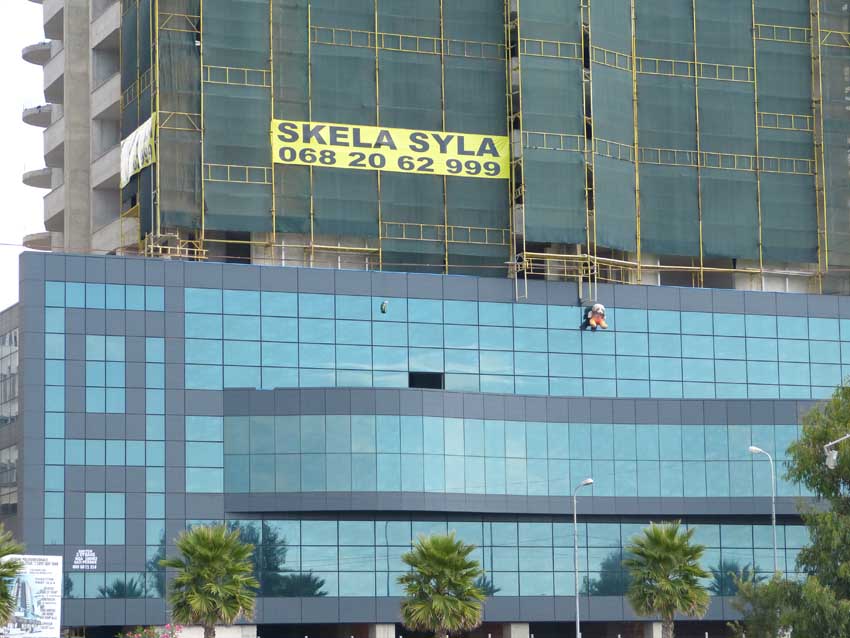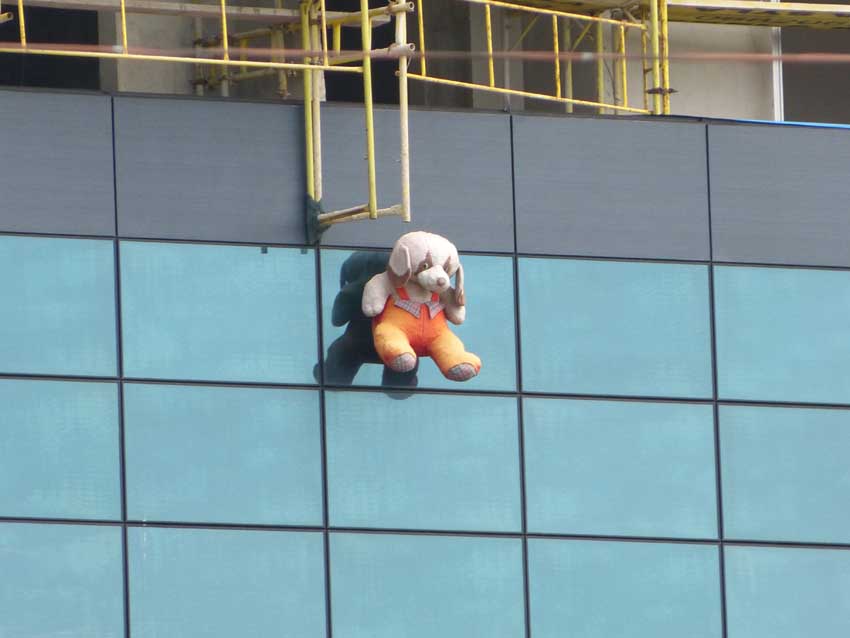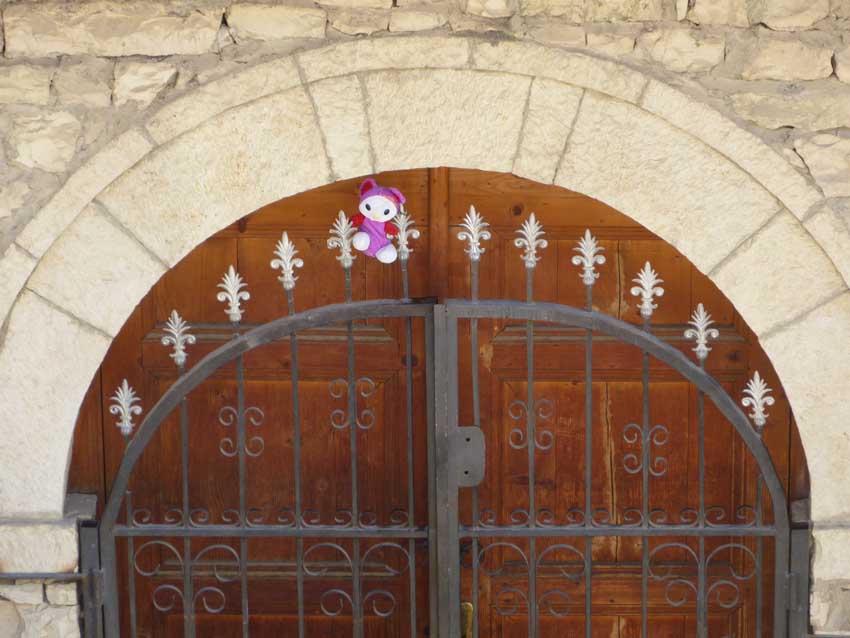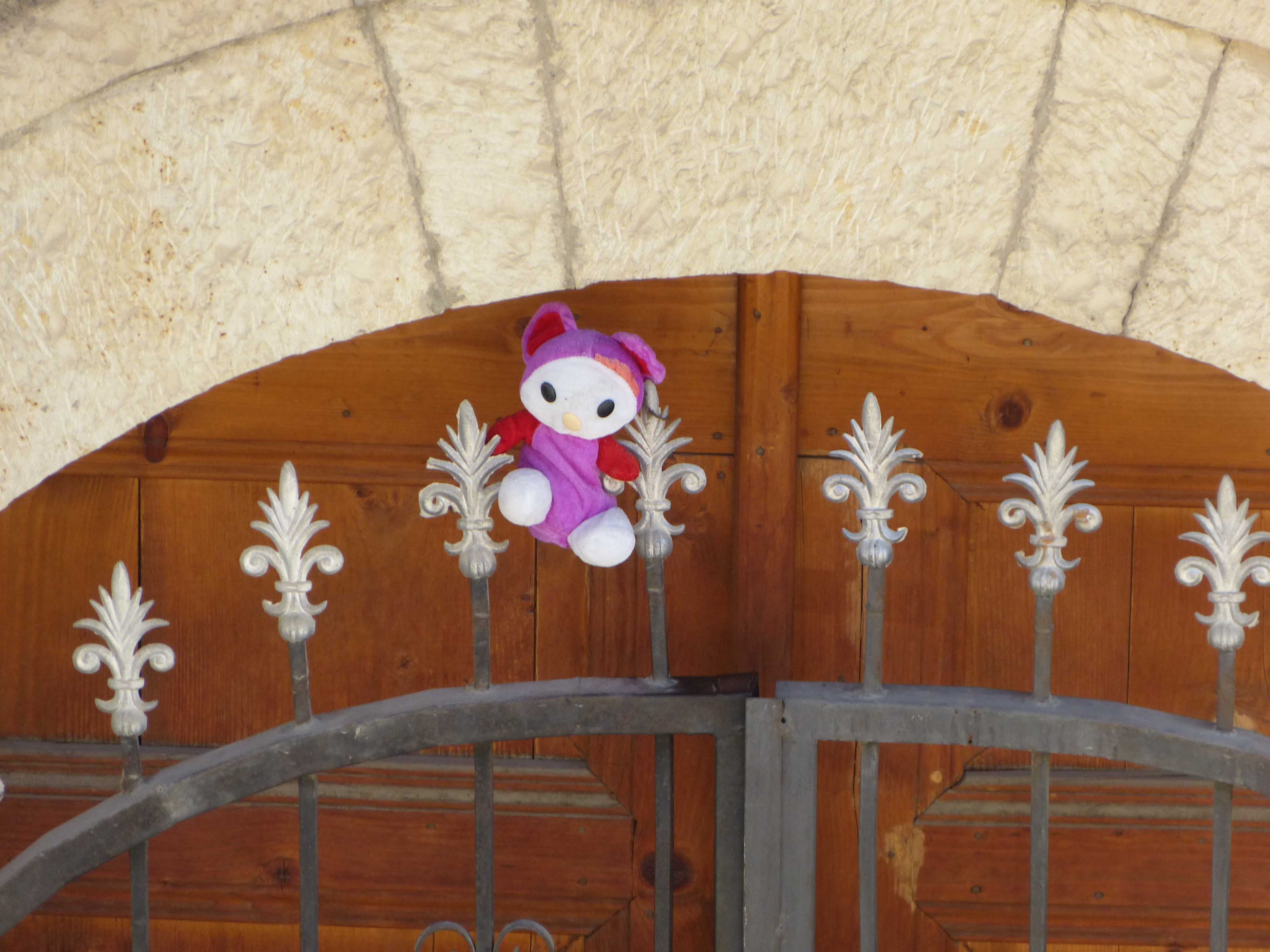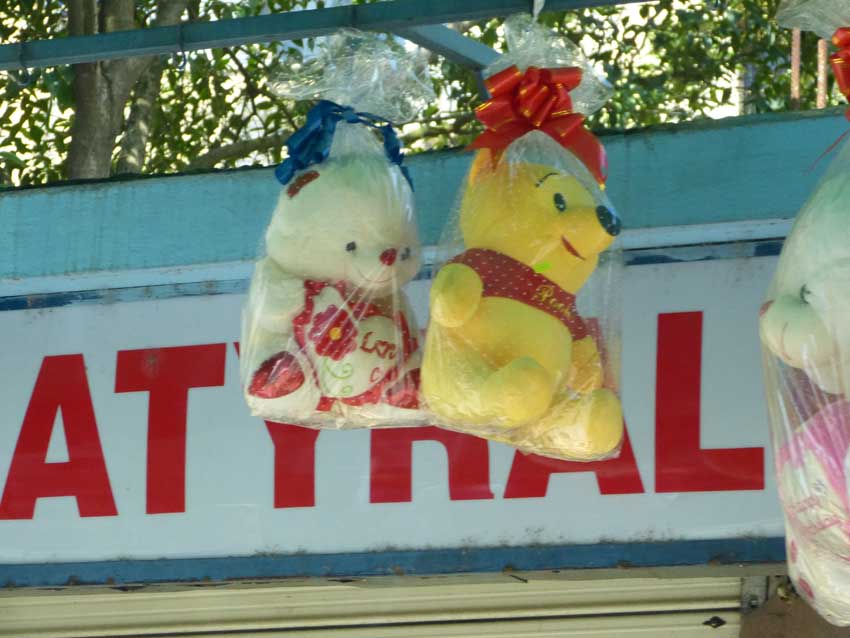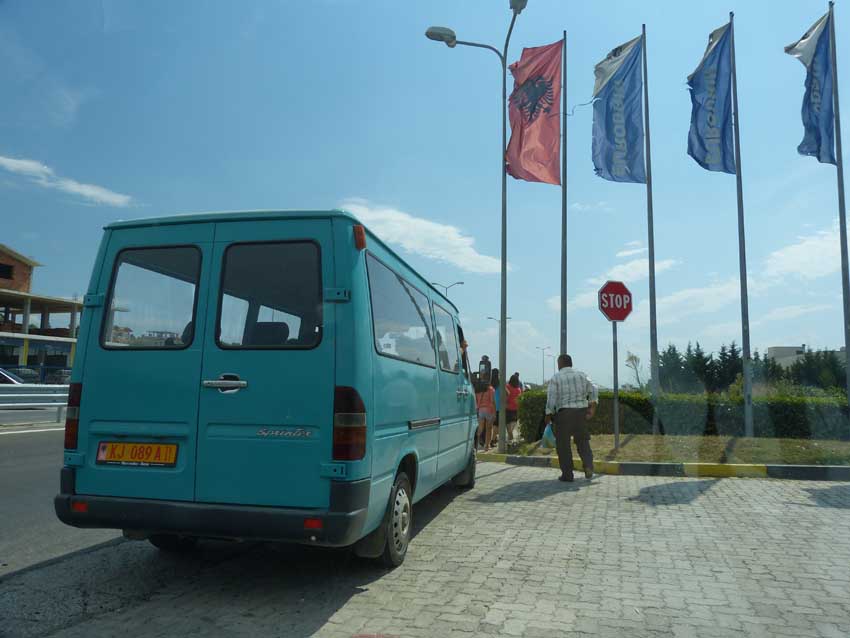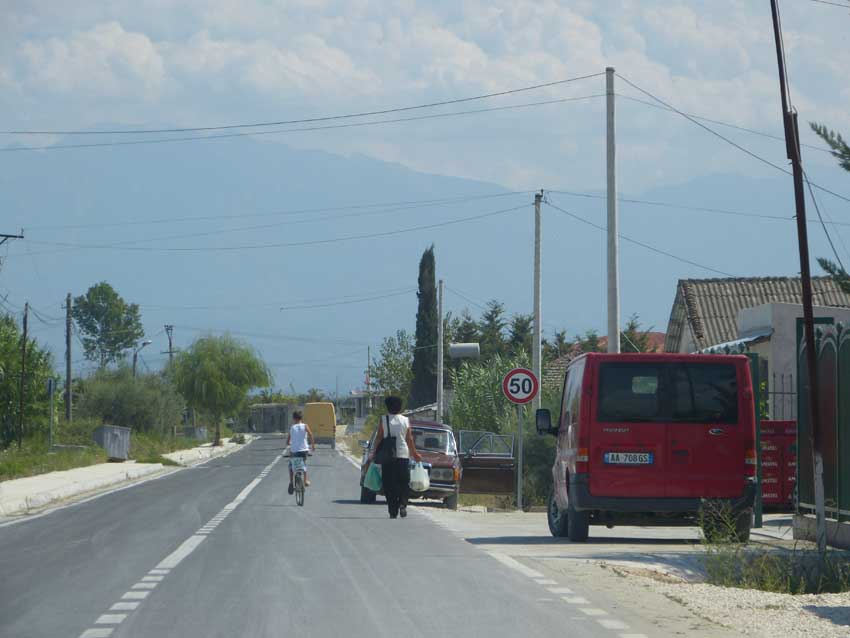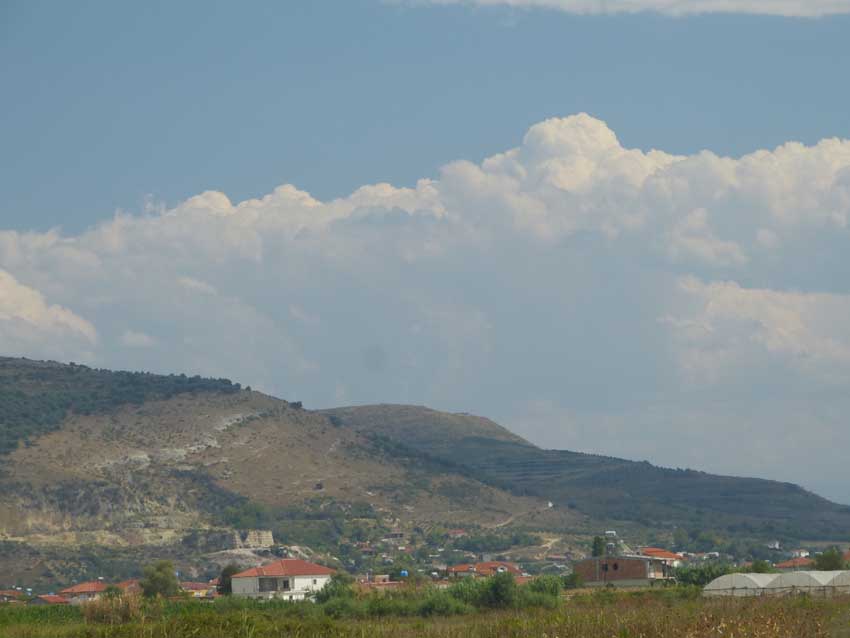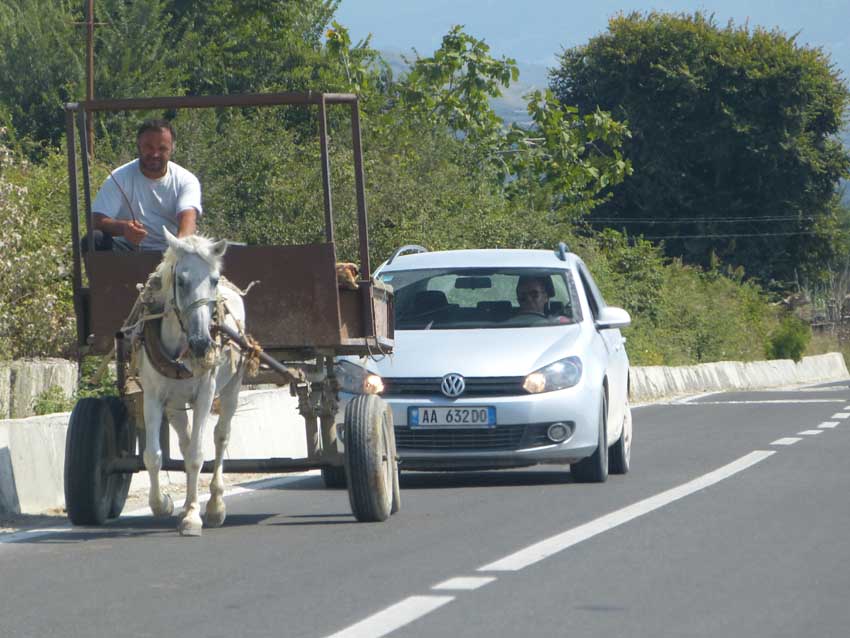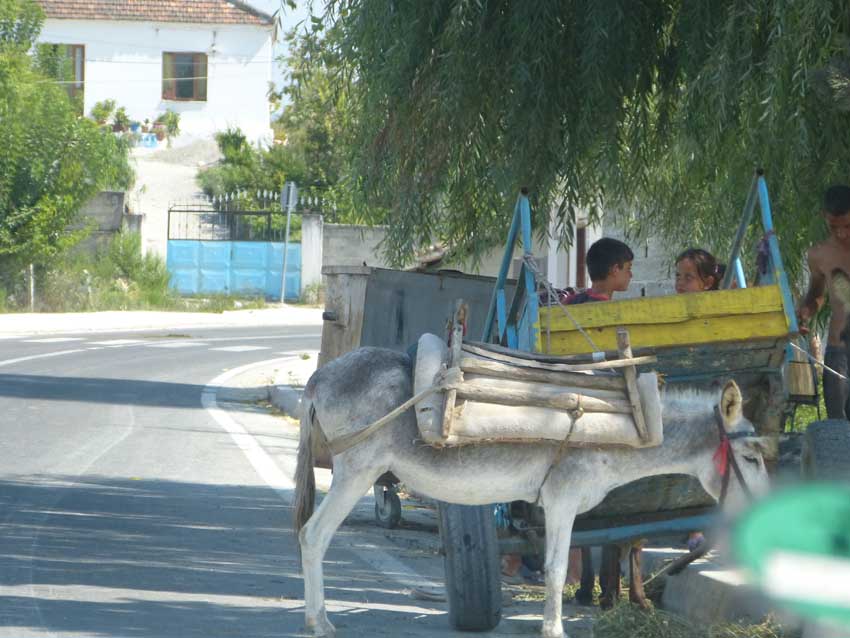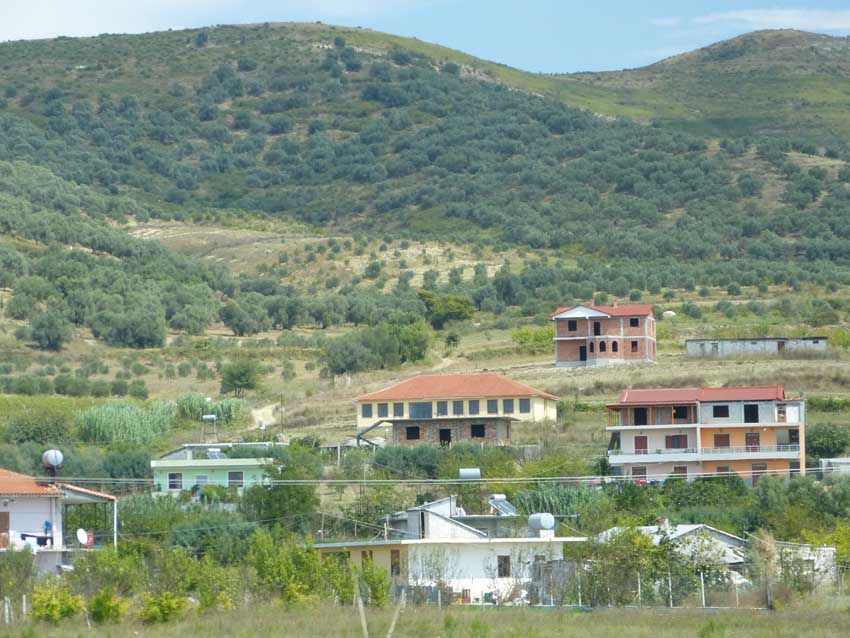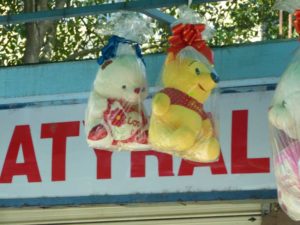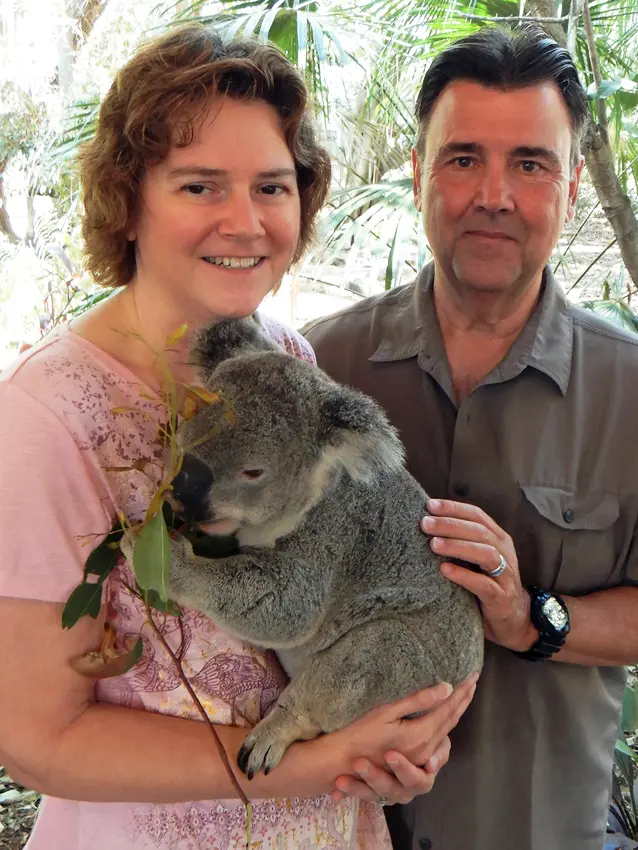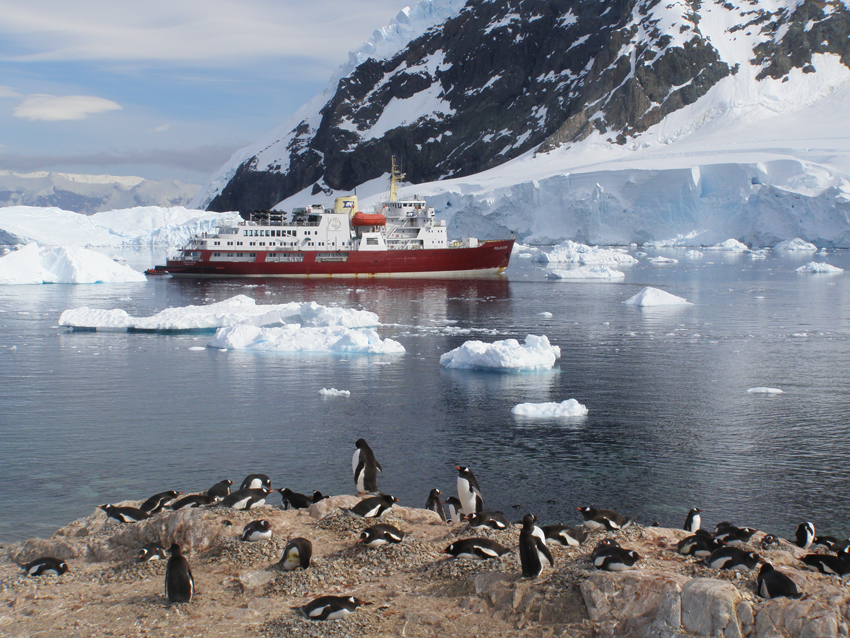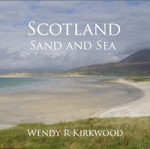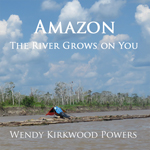Last Updated on June 24, 2019 by PowersToTravel
Leaving Durrës, we headed south and then east into the countryside. The road south lacked scenic beauty but the road and our guide continued to be chock full of interesting sights and stories.
As we left Durres, we noticed a very large stuffed dog hanging from a high-rise building under construction. I commented on the dog’s sad fate. Kledi told us that the stuffed animal is an Albanian tradition. When a house is under construction, a stuffed animal is hung outside to absorb (or ward off?) the evil spirits.
“What happens when the stuffed animal falls apart?”
“They throw it out.”
We also learned why we saw so many stuffed animals. It is because Albanians seldom ever actually complete construction. Most individual houses were two or three stories high. The first story would appear occupied, the second story lack windows and appear deserted, and the third story might consist of some rebar poking up from the roof of the 2nd story.
My husband is ever looking for his next business idea. “I know what business you need! You need someone to make windows!”
“Windows?” asked Kledi rather confusedly. “Why do we need windows? We have windows.”
“Because most of your houses are missing them,” answered Greg.
“Oh, we don’t need windows! Those houses just aren’t done yet.”
“But so many aren’t done.”
Kledi went on to explain that 95% of Albanians own their own homes, unmortgaged. The mortgage market hardly exists in Albania. Similar to many family-centric cultures, several generations live together under the same roof. In his own home, he, his wife and child live on the second story, and his parents and brother live on the first floor. There is no stairway between the two floors, the stairway is on the outside of the house, and there’s a kitchen in each unit. Basically, it’s a two-family house. When his brother marries, he will probably move out and start his own house.
To start a house, the couple builds the first floor, and perhaps the shell of the second story. They then finish the inside of the first floor, complete with windows. The tile and appliances and décor will be new at the time. The second story will look like an empty shell until they have saved enough money to complete it. Meanwhile from the pilings of the second story, rebar (metal shafts) protrude. The family is then waiting to save enough money to create the third story. When the second story is built, years may have past, and the son on the second floor may have better appliances and fixtures than his parents below. It may take 20 years to completely build the house.
During the Communist years, no one owned their own home, or anything for that matter. Kledi told us of the one-family, one-cow approach: each farmer cared for a single cow. That cow provided milk for the family, but was not owned by the family. Each day the state-appointed shepherd would stop by and collect the cow, marshaling the herd to pasture. At the end of the day the shepherd would return each cow to her adoptive family for evening safe-keeping.
In the Communist days farms were mechanized, run as cooperatives. Albania was able to grow enough to feed itself, and did not import food, or much of anything for that matter, from outside.
Since…
The operative word is “Since…” “Since” in Albania always means “Since the end of Communism…”
Since… each farmer was given ½ an acre of land. Some kept the land, and now work the small plot in an un-mechanized fashion. They keep their small menagerie of donkey, chickens, goats, pigs or cows. The lifestyle is actually very similar to the Scottish crofter, making do with the bit of land and working multiple jobs to make ends meet.
Others sold their ½ acre and moved to town, or out of the country, while some farmers and corporations bought that land and have created larger farms, and re-attempted mechanization.
As we traveled around the country, we saw houses and farms in various states of condition, and without Kledi’s knowledge we might have assumed that the people were very poor. If we were to compare monthly salary, certainly the Albanians are “poor”, but as we learned to compare lifestyles, we learned that their lifestyle takes a lot less money to maintain than ours.
It’s hard to imagine life without mortgages and debit, live where the fruits and vegetables you eat are directly related to the seasons and what is ripe in the countryside, where tea may not come from a Lipton’s tea bag, but from local herbs. It was a pleasure to experience a sliver of that lifestyle.
Check out this article of mine too:
Albania Travel Blog – Itinerary, Impressions and Diabetic Travel Tips

